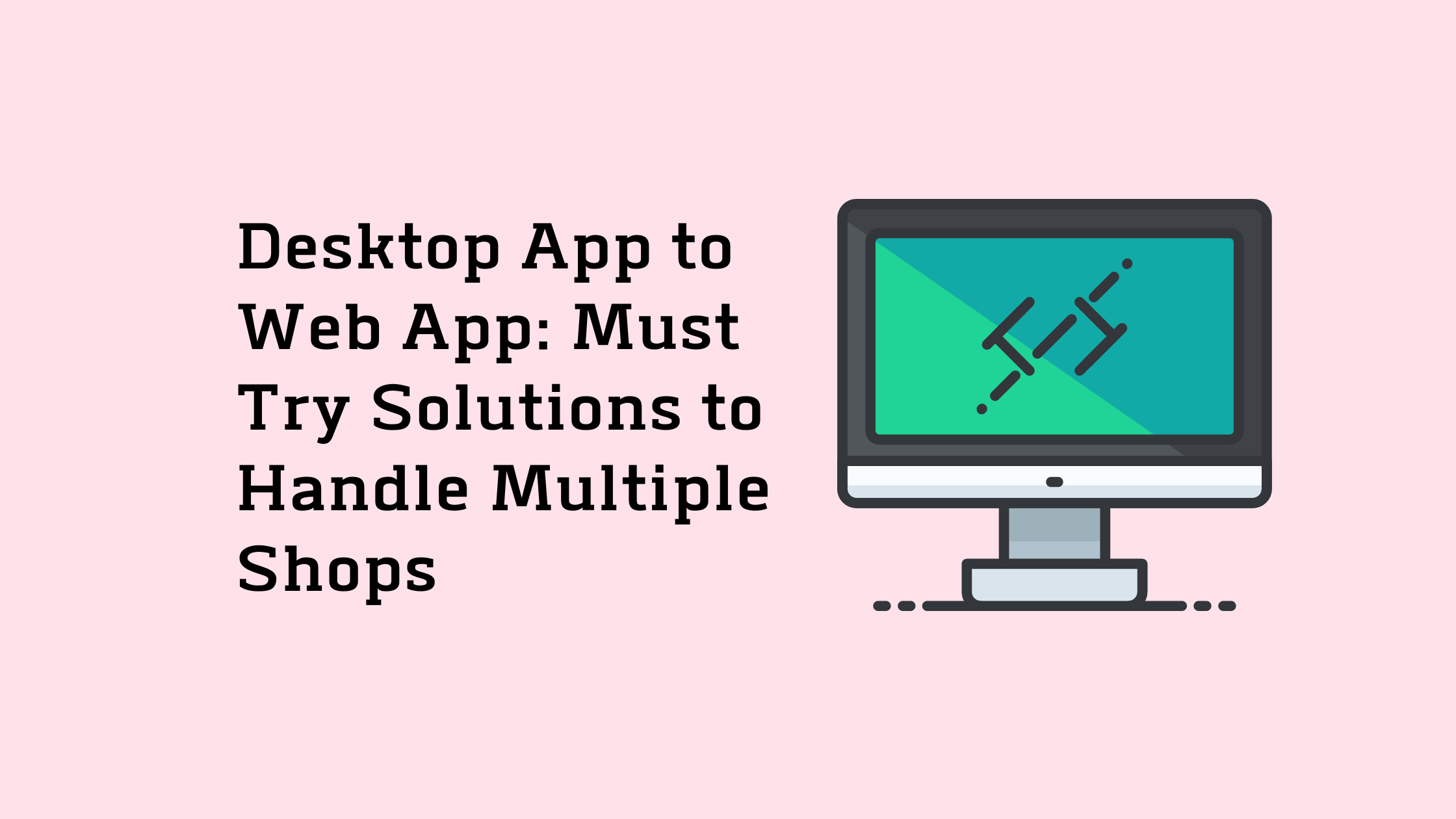At one point, if you wanted to develop an app, you had to choose whether you’d like to build an online application or a desktop application. You could also invest massive funds to build and maintain both. With recent technological advances, the gap between web applications and desktop apps is reducing.

Whether to develop a web-based application, a PWA, a desktop-based container app, or an application for a desktop that is native is often filled with technical discussions.
Of course, having a solid knowledge of the tradeoffs between technology and humans is crucial. But what’s often overlooked is the examination of the actual end-users and what strategy is best for them.
To be included in these discussions, we should show an appreciation for two things:
The various available technological approaches and how each affects the user experience.
The context of our users, their duties, and how they connect to which technology could be the best choice.
It is now possible to reap some of the benefits of native desktop apps for less money using technology like desktop containers and advanced web applications (PWAs) while keeping an online service. Why choose between developing a desktop or a web-based application when you can have both?
Web vs. desktop
The first thing to know is the benefits and drawbacks of web-based applications instead of desktop applications.
What is the difference between “web application” and “desktop app”? What exactly is a desktop app? Web apps are run through an internet browser, whereas desktop applications are installed and run on the user’s computer. Both have advantages from the perspective of the user and in various situations:
Web apps summary:
Are they cross-platform?
Web-based apps are in a position to function nearly identically across various operating systems. Still, an entirely different version of a desktop application may require a different build specifically for Windows, Mac, and Linux, each with a distinct set of design guidelines that users are likely to want to see. When developing and building web-based applications, it is important to consider users’ needs. Be taken into account for different browsers.
Accessible from any location
This aspect includes mobile devices or shared computers. Desktop applications are only available on the devices they’ve had installed.
Require no installation or manual updates
Web-based apps do not require installation or installation. Updates are applied automatically. Desktop apps require users to install the program and then apply updates as new releases are made. These steps are extra time for the users and give more opportunities for something to go wrong and result in frustration.
Desktop apps summary
Access operating system features
Desktop apps can use OS features like the notification system and managing files, whereas web applications have extremely limited access to these features. The capabilities of web apps are restricted by the limitations of the internet browser and the device it runs.
Give better offline support.
Web applications typically require an internet connection to be able to access them and also save progress. Desktop applications can be opened and operated without an internet connection. However, this is an average principle, and there are some exceptions. Some instances are web-based apps that run offline and desktop apps that do not.
Increase the chances of repeat usage
Once installed, desktop applications can open at startup or turn into the default app to open a specific file. This aspect is why they are great for use over the long term, for everyday usage. They can be seen on the user’s desktop and are not just an additional tab within the browser.
Web app vs. desktop app comparison summary
There are many advantages to the two approaches. As I stated, we can choose between these two options. Modern technology is making it possible to enjoy the most beneficial of both.
Progressive Web Apps
According to Forrester, Progressive Apps are a rapidly evolving technology that is trying to leverage some advantages of native apps. The term “progressive web app” refers to a Progressive Web App (PWA), a web application with a few lines of code that enable it to appear and behave like a desktop or mobile application.
What is this referring to?
It is possible to install it with one click on your device.
Once installed, it will be opened and run as an app for desktop or mobile devices.
There is no border of the browser that surrounds it. You can attach this to the taskbar or your desktop screen.
You can use it to accomplish some tasks offline using caching.
Sounds like a desktop app, right?
Progressive web app summary
Although it might appear similar to an application for desktops, it’s missing some powerful in-built features that make desktop apps more effective, like the ability to access OS features.
The benefit of PWAs is they can be installed on both desktop computers and mobile devices. You’re getting three applications for the price of one. Kind of.
(Of course, in the event of the mobile PWA, it is still necessary to make your application flexible and consider other factors like performance on mobile devices.)
Although PWAs can provide all the benefits in the abstract, their various level of functionality across OSes means that they cannot be completely used to replace native apps -but not quite yet. As of now, it’s an obscure technology that needs to be more widely accepted by users who aren’t in the tech industry.
However, the creation of PWAs is a complex task. PWA could offer users an app-like experience at only a fraction of the cost of creating native desktop and mobile apps, even if the application is already on a website application. As technology advances quickly, it could become an important competitor shortly.
Desktop Containers
Frameworks called desktop containers to enable desktop applications to be developed using web technologies, such as Javascript, HTML, and CSS.
The most widely used desktop application for our writing time is Electron. There are probably a few Electron apps in use right now. Microsoft Teams, Slack, Spotify, Figma, and Skype are a few examples used regularly. Popular editors for code Atom and Visual Studio are also built upon this technology. Why is it such an appealing option?
Since desktop containers are written with web technologies, you can manage both a web and a desktop application. In the first place, they can have a common codebase that has little or no differences. This aspect makes it simpler to run on different platforms. But, users will be expecting slightly different experiences across various operating systems; therefore, the work must be carried out to accommodate users’ expectations.
The experience when working with a container for a desktops program is much more similar to the experience of a native app when contrasted with a PWA. Desktop containers are usually installed and upgraded, similar to native applications. One of the major advantages of desktop containers over PWA is using OS features like notification, file system, and multi-window management.
Desktop containers summary
They are more powerful than PWAs. However, with this power comes great…development costs. Building and designing for desktop and web experience simultaneously requires a lot of effort but with the added benefit of the capacity to write in the same language. We must measure whether the extra work is worthwhile, and we can measure this by analyzing the user.
User Considerations
We now know the various tradeoffs of different technology approaches, and we can better think about how they might impact the end user.
The next step would be to comprehend our clients and the many factors favorable to one approach.
Context and the tasks
Context
What types of environments are they likely to be in? What kind of devices are they using? Are you expecting them to use this application at home, work, or on the road? Do they have a computer at work or a personal laptop? Are they all connected to Internet access? This aspect could help you decide whether it is better to use a desktop application, an accessible web-based application, or even an offline-friendly PWA.
Which operating systems or browsers do they run? Are there restrictions for installing software or different browsers? If your users cannot download new software, then a web-based application may be better. However, if they use the latest browser version, an app installed on desktops could be a better choice. There are usually significant differences between these two types of users.
Tasks
How long will they utilize the app? How often? Desktop apps are better designed for daily routine Web apps are great for short and irregular tasks that don’t require installing software.
Do they require any of the features available in an operating system? Do users need native alerts? Or multi-window control? Do you have tasks that cannot be accomplished from the web browser? If so, the desktop container application could be the right choice.
Do they need to be integrated into other programs? We can use several applications to accomplish the task most of the time. For instance, we can edit documents shared via email. These tasks are simpler if apps can communicate with one another — this is an option that desktop container apps provide over web-based apps.
Comparative features of the web, PWA, desktop container, and desktop application
Making the choice
Due to the latest advancements that have been made, the gap between web and desktop apps is shrinking. We can now enjoy the best of both worlds, using technologies such as desktop containers and PWAs. This aspect lets us have a desktop and web offering at a lower cost than before.
However, the word “cheap” doesn’t necessarily mean free, and we must always consider the anticipated real-world benefit for users against the expense of the product we’re developing. Are there elements of desktop apps worthwhile enough to justify the extra time to create, develop and maintain? Do users care enough and regularly use it to download it on their devices?
What is the ‘MVP’? Yes, a desktop-based app could be fantastic but is it really necessary? Can you begin with a web-based application before adding features, moving to the PWA, and finally using a desktop container later? Knowing your users can help answer queries related to Basic Technology, Development Of Technology, Progressive Web App Technology, Customer Experiences, Dashlane Web-First Experience, and Native App Experience.
Consider great Programming Experience, Chats From Device, Device To Device, Intelligent Collaboration Devices, Google Chrome, Google Docs, Android Phones, Business-Class Phones, Enterprise Cloud Phone Systems, and Applications For Project Management and Development Projects.
Conclusion
If you’re creating an app using web technology, create it as a progressive web-based application. When you’ve surpassed the limitations provided to you, create your PWA run inside Electron. If you don’t have requirements not addressed with advanced web applications, avoid incurring the expense of maintaining your desktop software. Squash Apps offers the best solutions to understand Desktop apps to web apps.

Dr.Supreena has published two international books in finance with the able guidance of her guide and department at Ethiraj College of Women, University of Madras during her PhD in Economics and Finance. She is the Recipient of Dr Vedagiri Shanmugasundaram (An Oxford Scholar) Award for Outstanding and Successful PhD Candidate from Ethiraj College for Women concerning research record and academic distinction. She is experienced in the domain of finance, digital marketing and information technology writing on Artificial Intelligence, IoT, PaaS and SaaS cloud computing etc. She is NIIT qualified in Advanced Network Computing, Google Certified in digital marketing. Her hobbies to maintain balance and reduce stress are gardening and cooking.


